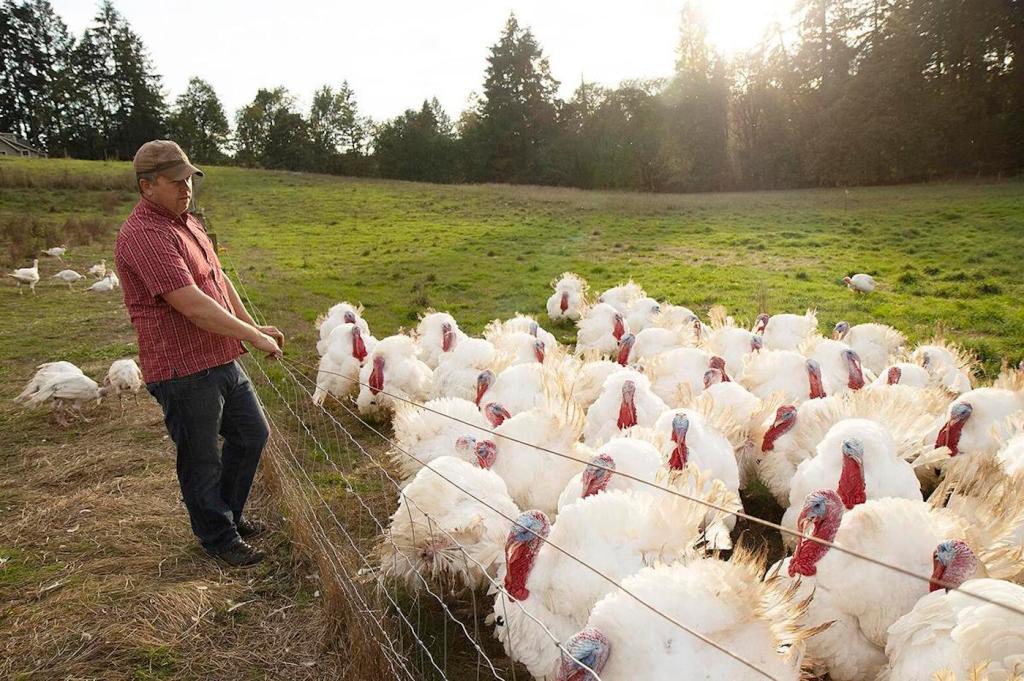A COVID-19 Thanksgiving leaves turkey producers guessing
Published 6:15 am Thursday, October 22, 2020

- Mark Anderson, owner of Champoeg Farm in St. Paul, calls to a group of pasture-raised turkey toms. Large-scale producers have had a tough 2020 thanks to the coronavirus, but many smaller, direct-to-consumer producers such as Anderson have been thriving.
ST. PAUL — Mark Anderson, owner of Champoeg Farm in St. Paul, called to his flock of pasture-raised, broad-breasted white turkeys as he approached the fence. The toms replied with a throaty jumble of gobbling.
Trending
“It’s that time of year,” he said. “We’re taking orders for Thanksgiving.”
Turkey producers nationwide are asking hard questions this year: With people celebrating Thanksgiving in smaller gatherings, will Americans buy whole birds? Smaller birds? Only parts? Farmers and retailers are trying to guess the market.
Large-scale producers already have had a tough 2020, but many smaller, direct-to-consumer producers such as Anderson have been thriving.
Trending
The pandemic definitely will change Thanksgiving, experts say.
The Turkey Talk Line that opens Nov. 2 will, for the first time in its 39-year history, have experts take calls from novice cooks remotely rather than from the Butterball call center near Chicago.
Nearly 70% of Americans say they plan to celebrate Thanksgiving differently this year, according to a consumer survey by market research firm Numerator. Nearly half of respondents plan to gather in smaller groups and 65% expect to celebrate with only immediate household members.
“I think a lot of people, at least here in Portland, are scared to travel right now,” said Anderson.
With larger gatherings likely be split into smaller ones, Joel Brandenberger, president of the National Turkey Federation, said he anticipates more total celebrations — and more birds sold. Poundage, he said, is harder to predict.
Some industry leaders expect many Americans will seek smaller birds. But the turkey industry can’t easily pivot. Contracts for baby turkeys, called poults, are written months in advance, and many of this Thanksgiving’s turkeys already are in cold storage.
Brandenberger said some smaller producers are aiming to grow lighter birds and offer more bone and breast options, but that’s not an industry-wide trend. The big companies appear to be growing large birds and hoping for the best.
Experts say Thanksgiving likely will help an industry that’s been struggling since March.
Mark Jordan, agricultural economist and executive director of LEAP Market Analytics, said closures of restaurants, cafeterias and catering events this year have “crushed” segments of the industry. The foodservice market, Jordan said, made up about 55% of the turkey industry’s sales pre-pandemic.
Scan data from supermarkets show retail turkey sales have increased dramatically, but industry leaders say those sales don’t offset foodservice losses.
Despite industry disruptions, some direct-to-consumer turkey producers have had more opportunity to strut their tail feathers.
Although Anderson of Champoeg Farm lost nearly $155,000 in restaurant sales this year, his direct-to-consumer, or DTC, market soared. Between March and September 2019, the farm made only $800 in DTC sales. This year during that same timeframe, the farm made $50,000 in DTC. Even when the pandemic ends, Anderson said he plans to expand selling direct.
“Hey, 2020 hasn’t all been bad, right?” he said. “Some changes are good.”









